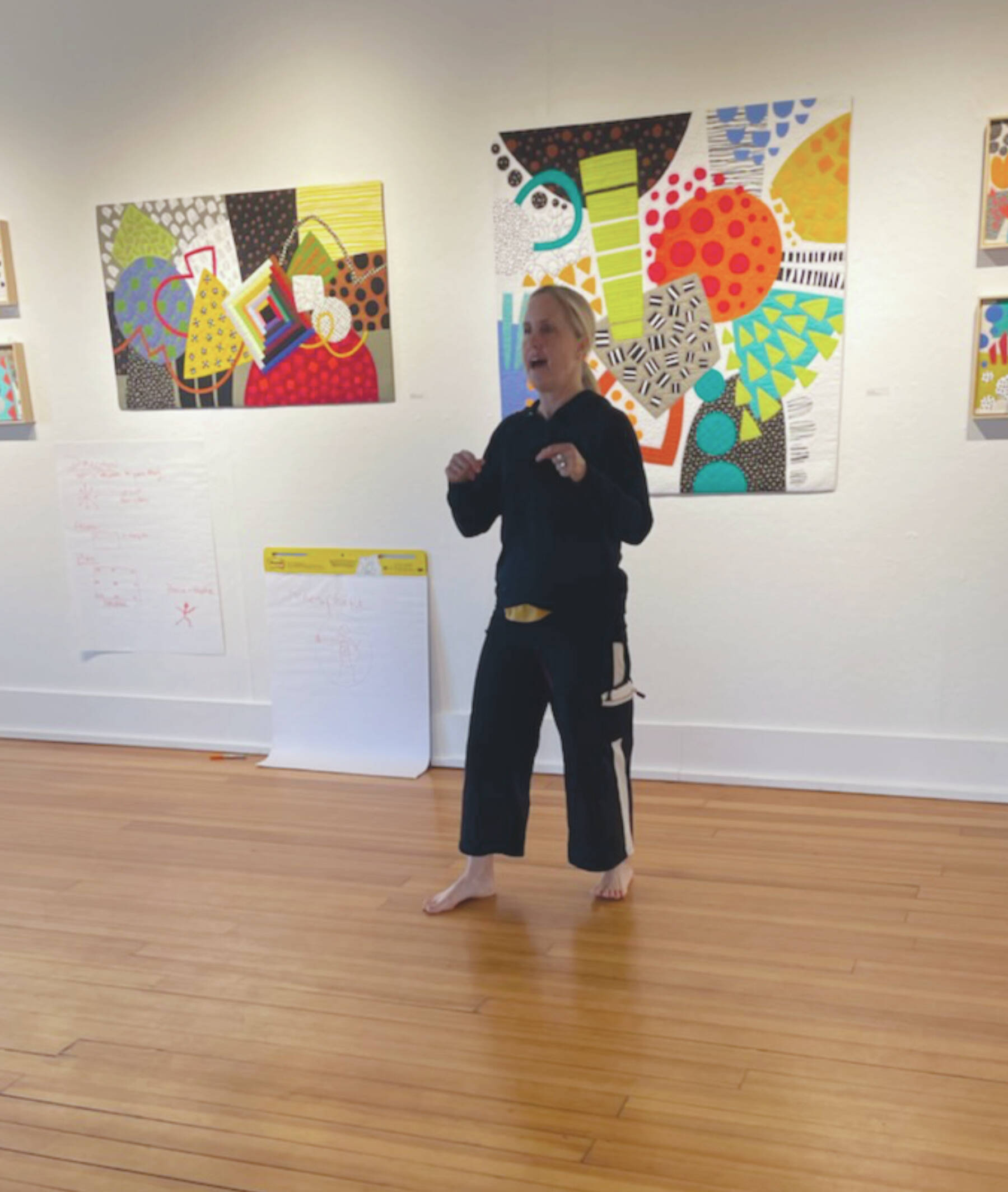Bunnell Street Arts Center is hosting three artist residencies for the month of April. D. Chase Angier is an interdisciplinary movement choreographer.
Angier presented a two-day movement choreography workshop on Sunday and Monday. Her biography on the Bunnell website states that she “creates performances for visual art and theater venues as well as public sites. These intuitively driven works are created in collaboration with dynamic artists across disciplines.”
In the introduction to her workshop last Sunday, she described some additional sites where she has created work in the past, such as abandoned banks. In summer 2025, she is scheduled to do a show at a defunct train station in Buffalo, New York. She noted that it doesn’t matter if you have had a ton of dance experience or very little or none.
“It’s just about moving and thinking about how we use space,” she said.
”I’m not going to teach you dance, I’m going to give you compositional tools that you can use to create your own composition. I’m going to lead you through some explorations that will give you structural tools that might be helpful for creating physical art.”
Angier also explained some of what she has been exploring in Homer in search of creating physical choreography spaces in the community.
“I’ve been walking almost every day, every street in Homer. I walked to the Spit the first day. I’ve walked to all of the beaches, but I haven’t really been out to the hinterlands much. Walking is a good tempo for me to take in information about the landscape, what I sense and what I’m drawn to,” she said.
She noted the clear, magnificent mountain and sea landscape but, “I’m also super interested in the feature of rust that I see in this community. I’m taking in a lot of colors: blue, gray, white and a little bit of yellow. If I had a million dollars I would make the most amazing piece out where those big boats are resting about half way out the Spit,” she said. “I really like that area.”
The decay component of community is as significant as the living and the old spaces offer their own opportunity for composition.
“I probably wouldn’t create so much with the landscape here because the landscape is enough by itself; it doesn’t need any more attention. And, the scale of your natural environment is too large,” she said.
The features of choreography that she began with in the workshop included simply walking and thinking about direction and speed, walking backward or forward or sideways.
“Think about the perimeter of your movement, think about how you’re placing your foot, maybe how high you are lifting your leg or other variations you might consider, what feels comfortable or rigid? Make a choice,” she said.
The next feature of the workshop involved interacting with the others in the room and noting the way that paths crossed when the participants met others.
“This creates another dimension of awareness and choice you can make about how you acknowledge them. Now, we’re going to move together like a school of fish, making the same patterns of movement on the floor.”
The third activity involved grouping participants with others and the process of making static shapes with each other.
Angier instructed in the consideration of both positive and negative space: the shape of the body and the image of space around the body. Group members took turns choosing components of the shapes that appealed them and arranging the physical shapes into human statues and determining where to place the shapes in the space of the studio.
Angier instructed the group on stage direction: upstage, downstage, center stage, stage right and stage left. She explained that in choreography you can simply call out to your performers or move the dimensions of the choreography by using components of stage direction.
The group created a very simple, three-movement choreography and played with turning the directions, speed and body shapes, and group formation on the floor.
Finally, they moved outside to the Beluga Slough viewing platform at the end of East Bunnell Avenue and recreated a shape there, exploring with the addition of movement and visualization from different angles.
Short films from Angier’s international works with professional dancers can be found at www.angierperformanceworks.com.



